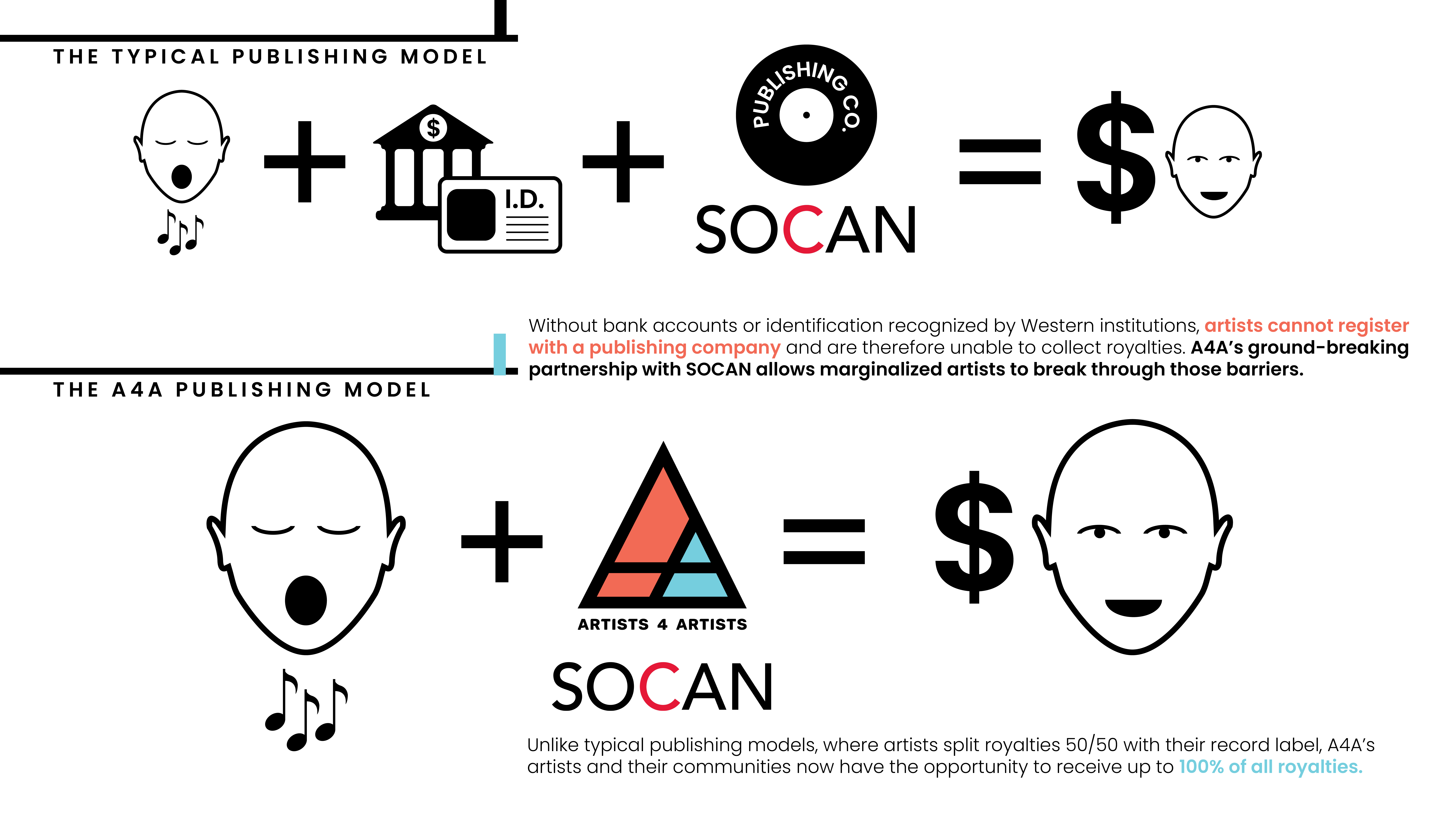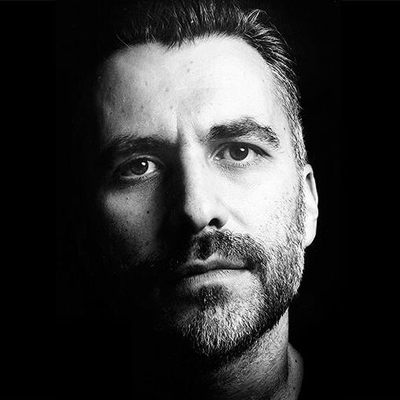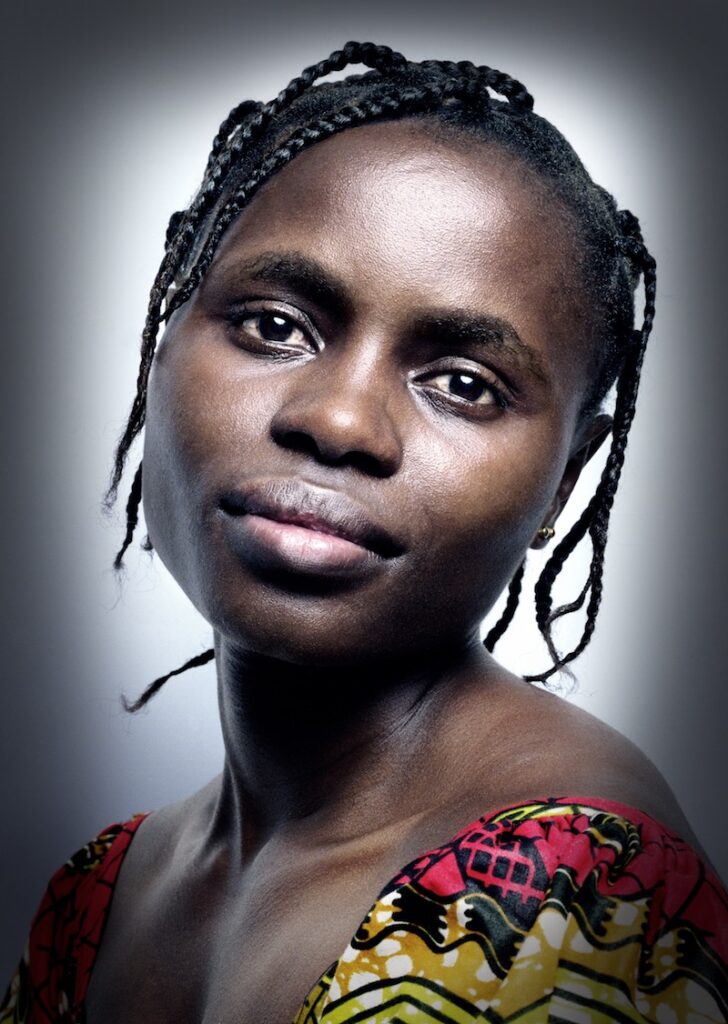
The A4A publishing model was formed based on the firm belief that artists deserve equal access to publishing arrangements, regardless of geographic location and socioeconomic status. Thanks to an agreement with SOCAN – a leader in the global transformation of music rights, the innovation is truly breaking new ground, making it possible to distribute 100% of profits back to the artists.
“The model opens up the possibility for countless marginalized artists around the world to protect their copyright and receive what is due to them.”
Darcy Ataman, A4A Co-founder
A4A Records’ roster features artists who have emerged from Make Music Matter’s Healing in Harmony music therapy program for trauma survivors including individuals living in extreme poverty and conflict zones. This presented the dilemma of representing artists who are excluded from ownership of their publishing rights as songwriters due to a lack of access to bank accounts, addresses, or legal identification by typical Western standards. Make Music Matter founder Darcy Ataman and Board member David Bottrill, who had come together to co-found A4A Records & Publishing, set out to create a one-of-a-kind publishing model.
An agreement was struck with SOCAN and through the creation of a new bylaw, A4A may now act in place of the artist to administer the collection of royalties. With A4A Publishing at the center of this transaction, artists in some of the world’s most vulnerable communities can now receive fair compensation and the recognition they deserve.

Check out our Q&A with Darcy Ataman, founder of Make Music Matter and co-founder of A4A Records and Publishing, to learn more about the expanding A4A publishing model.

A4A Records & Publishing
(Photo by Platon for The People’s Portfolio and Dr. Denis Mukwege)
Q: Tell us about how the A4A publishing model was born. Where did the idea come from and how did it get started?
DA: The question of publishing came up around the signing of the A4A Records label deal with Warner Music Canada. And so began that journey to find a platform for our artists. The problem we encountered is 99% of our artists don’t have bank accounts or legal identification that we would recognize, which excludes them from ownership of their publishing rights as songwriters.
We want to treat the artists as true artists and they deserve whatever monies may come – it’s a crucial part of our ethos. So, we created the A4A publishing model to solve this problem. Under our deal with SOCAN, the publishing company can act in place of the artist. Now, artists all over the world who live in poverty and conflict zones can sign to our publishing company and we could collect their royalties. We can then distribute up to 100% of the profits back to the artist in an ethical way.
“The problem we encountered is 99% of our artists don’t have bank accounts or legal identification that we would recognize, which excludes them from ownership of their publishing rights as songwriters.”
Darcy Ataman, A4A Co-founder

(Photo by Platon for The People’s Portfolio and Dr. Denis Mukwege)
Q: How do you see A4A Publishing expanding in the future?
DA: We really want to develop A4A Publishing as a platform for millions of potential artists around the world that need the same help as our Make Music Matter collective. For example, David and I are constantly inspired by Muhammad Yunus, the founder of Grameen Bank, as we have implemented a similar microfinancing approach to fairly compensate our songwriters. It would be great to partner with Yunus as an artistic add-on to his system. We like to think of A4A Publishing as the Grameen Bank for songwriters.
Q: How has the A4A publishing model been received by artists so far?
DA: Working in tandem with the A4A Records label to record and celebrate the healing power of music, artists are thrilled that their story gets out to the world unfiltered. They’re thrilled that they get seen. It’s a way to overcome all of the trauma and isolation they encounter.
(Cover photo credit: Jeppe Schilder)

